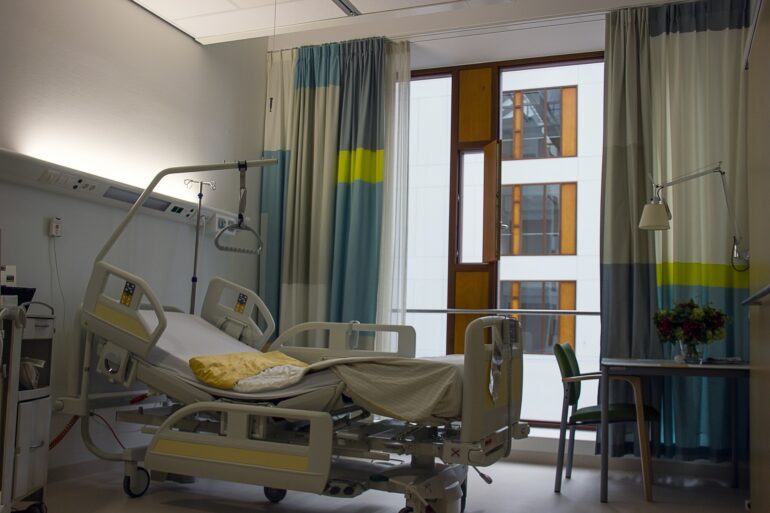TL;DR:
- New machine learning technology utilizes real-time A&E data to predict demand for emergency beds and their specific allocation within the hospital.
- Developed by a team of analysts and hospital staff at UCL and UCLH, the tool outperforms standard methods in predicting bed demand.
- Hospitals operating at capacity can benefit from the tool by ensuring sufficient beds in each department, minimizing the impact on patients and reducing the need for last-minute surgery cancellations.
- The machine learning tool incorporates additional data as patients move through A&E, updating its forecasts every 30 minutes to predict bed requirements within the next eight hours.
- The tool’s outputs are actionable and aspirational, supporting hospital operational staff in managing patient flow and enhancing hospital capacity.
- This innovation represents a significant step forward in hospital bed management, offering valuable insights for hospitals seeking to adopt similar approaches and optimize their operations.
Main AI News:
The groundbreaking utilization of machine learning technology is revolutionizing the management of emergency beds in hospitals. By harnessing real-time Accident and Emergency (A&E) data, this cutting-edge technology predicts the demand for emergency beds and identifies the specific areas of the hospital where they will be needed.
This groundbreaking technology was unveiled on July 11, 2023, at the prestigious Health and Care Analytics (HACA) conference. Developed through the collaborative efforts of a team comprising analysts and hospital staff from University College London (UCL) and UCLH, this innovative tool is currently being deployed by operational staff at UCLH. It empowers them to accurately forecast the number of emergency beds required within the next eight hours and precisely pinpoint the corresponding departments, such as surgical, medical, haematology and oncology or paediatric units. Initial tests have shown that this tool outperforms traditional methods in predicting bed demand.
With many hospitals in the UK operating at full capacity, the ability to anticipate and effectively manage the demand for emergency beds is critical. By accurately predicting short-term fluctuations in bed availability across the hospital, this remarkable tool enables operational staff to ensure sufficient bed allocation in each department. This proactive approach minimizes the impact on patients and helps avoid last-minute cancellations of planned surgeries.
Dr. Zella King, from the Clinical Operational Research Unit at UCL and one of the co-developers of this technology, highlights the potential of machine learning and data analytics in the day-to-day operations of hospitals. By analyzing real-time patient data and identifying patterns, this tool empowers hospital staff to make informed decisions and plan accordingly. Dr. King also emphasizes that while hospital capacity is influenced by various systemic factors, machine learning serves as a valuable tool in the complex challenge of managing hospital resources. She further states, “It’s fantastic that our tool is making a meaningful difference to the day-to-day running of UCLH.”
Craig Wood, the Clinical Operations Manager at University College London Hospitals NHS Foundation Trust (UCLH) and co-author of the study, emphasizes the importance of effectively managing patient flow throughout the hospital. Achieving a delicate balance between elective treatments and emergency admissions is crucial. Since the implementation of this tool at UCLH, targeted actions have been taken to optimize bed availability in specific areas of the hospital, thereby improving overall capacity management.
As patients progress through the A&E department, the machine learning tool continuously incorporates additional data, including vital signs, blood test results, and the need for specialized medical attention. It updates its forecasts every 30 minutes, while also predicting the number of individuals who will require a bed in the emergency department within the next eight hours. These predictions assume that the A&E department is meeting its targets for wait times. To train the tool, the team analyzed electronic health records from over 166,000 A&E visits between August 2021 and August 2022.
Dr. King emphasizes the need for machine learning outputs to be both actionable and aspirational, stating, “Machine learning could be a powerful tool to support hospital operational staff.” Sharing their findings at the HACA conference, the team hopes to provide valuable insights for other hospitals considering similar approaches to enhance their operations.
This research builds upon the team’s earlier work, published in the open-access journal npj Digital Medicine in 2022. While their previous study successfully predicted the total number of emergency beds needed within the next eight hours, this new tool has advanced further by providing a department-wise breakdown of bed demand.
Conclusion:
The integration of machine learning technology into hospital bed management represents a significant advancement in the healthcare market. By leveraging real-time data and predictive analytics, hospitals can enhance their operational efficiency, optimize resource allocation, and improve patient care. This innovation provides a competitive advantage for hospitals in managing patient flow and minimizing disruptions caused by fluctuating bed demand. As the market continues to embrace data-driven solutions, the successful implementation of machine learning in healthcare sets a precedent for further advancements and optimizations in the industry.

